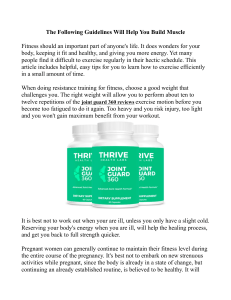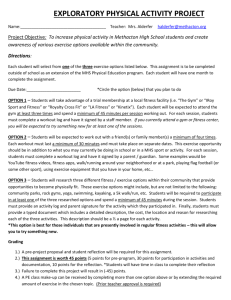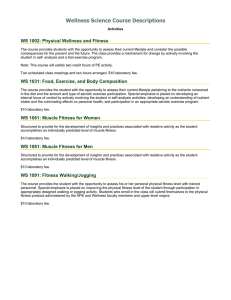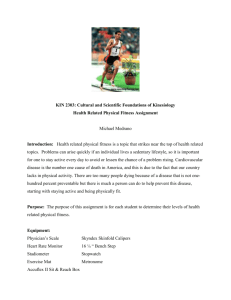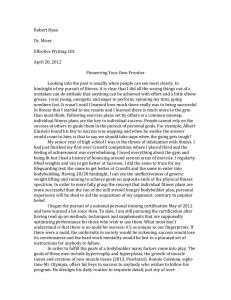Name
advertisement
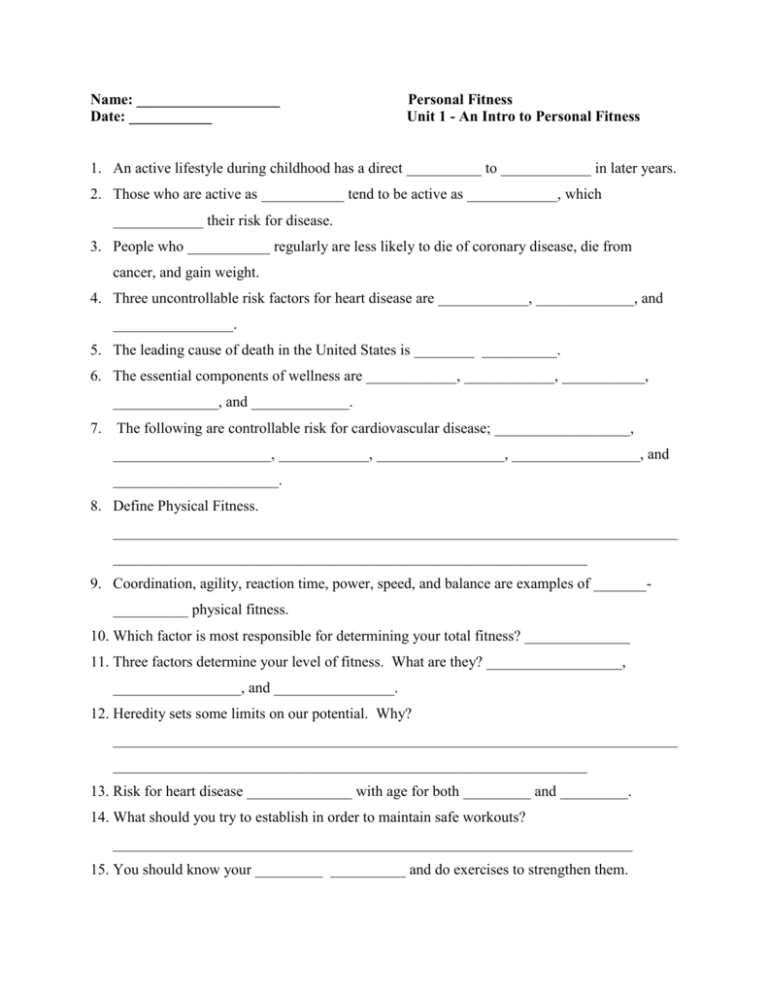
Name: ___________________ Date: ___________ Personal Fitness Unit 1 - An Intro to Personal Fitness 1. An active lifestyle during childhood has a direct __________ to ____________ in later years. 2. Those who are active as ___________ tend to be active as ____________, which ____________ their risk for disease. 3. People who ___________ regularly are less likely to die of coronary disease, die from cancer, and gain weight. 4. Three uncontrollable risk factors for heart disease are ____________, _____________, and ________________. 5. The leading cause of death in the United States is ________ __________. 6. The essential components of wellness are ____________, ____________, ___________, ______________, and _____________. 7. The following are controllable risk for cardiovascular disease; __________________, _____________________, ____________, _________________, _________________, and ______________________. 8. Define Physical Fitness. ___________________________________________________________________________ _______________________________________________________________ 9. Coordination, agility, reaction time, power, speed, and balance are examples of _________________ physical fitness. 10. Which factor is most responsible for determining your total fitness? ______________ 11. Three factors determine your level of fitness. What are they? __________________, _________________, and ________________. 12. Heredity sets some limits on our potential. Why? ___________________________________________________________________________ _______________________________________________________________ 13. Risk for heart disease ______________ with age for both _________ and _________. 14. What should you try to establish in order to maintain safe workouts? _____________________________________________________________________ 15. You should know your _________ __________ and do exercises to strengthen them. 16. Observe the _____________ for the _____________ of training. They are Overload, progression, and specificity. 17. Describe the type and why you should wear it in each situation. Hot weather___________________________________________________________ Night _______________________________________________________________ 18. You should plan your workout for which part of the day? ______________________ 19. When should you take on fluids? _________, _________, and ________ _________. 20. What two chemicals are known to be a cause of dehydration? _________ _________ 21. Clammy skin, increased heart rate, and muscle cramps describe what condition? _____________________________________________________________________ 22. _________ _____________ is characterized by fatigue, weakness, and collapse. 23. __________ ___________ can be life threatening and include hot, dry skin, and the shutting down of the sweating mechanism. 24. The breakdown in the body’s ability to produce heat is known as _______________. 25. To avoid hypothermia how should you dress? _______________________________ 26. What percentage of body heat is lost through your head and neck? _____% This is combated by wearing a hat or head covering. 27. The RICE method reduces swelling. Name each step. R______, I_______, C_______________, and E________________. 28. __________ are injuries to the ligaments or the capsule like sac that surrounds a joint. 29. What term is used for a combination of temperature and relative humidity? _______________________ 30. You should _________________ your warm-up in cold weather. 31. ________________ is one of the causes of muscle cramps.






